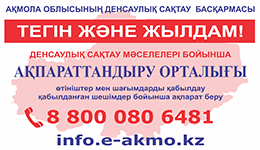
Four Walls
Lesson plan
|
Unit 4. Buildings |
School: General secondary school gymnasium named after M.Gabdullin |
|||||
|
Date: 18.12.2020 |
Teacher name: Begaidar D.B. |
|||||
|
Grade: 3 “a” |
Number present: |
absent: |
||||
|
Theme of the lesson: Four Walls |
||||||
|
Learning objectives that this lesson is contributing to |
3.1.1.1 - development of the student's knowledge and language base through self-expression, self-expression, and involvement in creative work. 3.1.6.1- use of critical and logical thinking; development of the ability to observe by obtaining information from various sources (text, images, videos); work with the ability to analyze and compare; 3.3.4.1-understand some specific information and details of short, supported information, or learn general and new words and use them effectively |
|||||
|
All learners will be able to:
|
||||||
|
Most learners will be able to:
|
||||||
|
Some learners will be able to:
|
||||||
|
Assessment criteria |
Learners have met the learning objective (3.1.1.1 / 3.1. 6.1./3.3.4.1.) if they can:
|
|||||
|
Value links |
Teamwork: Leaners will work individual showing respect and being polite with each other. |
|||||
|
Cross - curricular links |
Lesson is connected with Russian and Kazakh languages |
|||||
|
ICT skills |
Using SMART board, pictures and videos, |
|||||
|
Previous learning |
Time |
|||||
|
Plan |
||||||
|
Planned timings |
Planned activities |
Resources |
||||
|
Beginning 5 mins |
Greeting & Objectives -Good afternoon - Good afternoon, teacher - How are you? - OK -What day is it today? - The 4 th of December Answer the question. 1.What color is your house? 2. How many rooms in your house? 3.What is your favorite room in your house? Students must guess the topic of the lesson. |
PPT 1, 2 |
||||
|
Middle 15 min 7 min 2 min 6 min |
Teacher explain them the theme: Rooms: bedroom, livingroom, kitchen, bathroom
New words Chair [чейа] орындық Table [тейбл] үстел Cupboard[капбоуард] шкаф Cooker [кукэ] газ плита Fridge [фридж] тоңазытқыш
New words Bookcase[буккэйс] кітап сөресі Sofa [соуфа] диван Curtains [көртейнс] перделер Carpet [карпет] кілем
New words Mirror [миррор] айна Bed [бэд] төсек Lamp [ләмп] лампа Curbstone [карбстоун] тумба
New words Shower [шауер] душ Sink [синк] қол жуғыш Toilet [тойлет] унитаз Washing machine [уошиң машин] кір жуатын машина The game: Two face Teacher divided student into 2 group: The first group quietly say words related to the kitchen. The second group speaks louder words related to livingroom . Then they change and it turns out that the first group speaks louder , and the second is quiet. Task 1(individual). Drow your dream house
Teacher : the first stutend come to the blackboard Students: There is ….. in the bedroom There is ……in the living room There is ……. In the bathroom There is …… in the kitchen. Descriptors: - Describe the pictures - Use new words - Gives full answer Having finished the task the learners show their pictures and describe. (Use new words, gives full answer –“excellent”, Use some new words, doesn’t give full answer –“good”, use 1 new word, gives short answer–“not bad”). Feed back : oral Task 2(individual). Guess the riddle The teacher reads to the learners:
Descriptors: - Look at the pictures, - Listen to the description of a room, - Guess the room which is described Having finished the task the learners exchange their papers, check them. (4 right answers –“excellent”, 3 right answers –“good”, 2 right answers –“not bad”). Feedback: oral
Task 3(individual). Find unnecessary words Kitchen: chair, table, bed Livingroom: toilet, TV, sofa Bathroom: sink, fridge, washing machine Bedroom: bed, cupboard, lamp, sink Descriptor
(3-4 wors –“excellent”, 2-3 words –“good”, no less 1 word –“not bad”). Feedback: oral after they finish the task they will have to check each other and evaluate |
РРТ 4 РРТ 5 РРТ 6 РРТ 7 РРТ 8 РРТ 9 Papers, pencil and color pencils PPT 10-11 PPT 12-13 |
||||
|
End 5 mins |
Reflection The teacher gives the children stickers where they will write their feedback about the lesson and will have to stick them on the roof on the Windows or on the ground. On the roof if they have understood the lesson, on the Windows if they have not yet fully understood the topic, and on the ground if there are many questions left. Home work: To draw their favorite room in their house |
PPT 14-15 |
||||
|
Additional information |
||||||
|
Differentiation – how do you plan to give more support? How do you plan to challenge the more able learners? |
Assessment – how are you planning to check learners’ learning? |
|||||
|
Less able students – greater support by means of prompts, visuals or writing difficult words on the board More able students – independent work on definite tasks with little/no support Allow for flexible groupings and cooperative learning, depending on the appropriateness to the task Allow for extra time for students needing it, when appropriate Give extra text or visual support to students needing extra English support Create small learning groups for students needing extra support or enrichment with the co-teacher, when appropriate |
through observation |
|||||
|
Reflection Were the lesson objectives/learning objectives realistic? What did the learners learn today? What was the learning atmosphere like? Did my planned differentiation work well? Did I stick to timings? What changes did I make from my plan and why? |
||||||
|
Summary evaluation What two things went really well (consider both teaching and learning)? 1: 2: What two things would have improved the lesson (consider both teaching and learning)? 1: 2: What have I learned from this lesson about the class or individuals that will inform my next lesson? |
||||||
Lesson plan
|
Unit 4. Buildings |
School: General secondary school gymnasium named after M.Gabdullin |
|||||
|
Date: 18.12.2020 |
Teacher name: Begaidar D.B. |
|||||
|
Grade: 3 “a” |
Number present: |
absent: |
||||
|
Theme of the lesson: Four Walls |
||||||
|
Learning objectives that this lesson is contributing to |
3.1.1.1 - development of the student's knowledge and language base through self-expression, self-expression, and involvement in creative work. 3.1.6.1- use of critical and logical thinking; development of the ability to observe by obtaining information from various sources (text, images, videos); work with the ability to analyze and compare; 3.3.4.1-understand some specific information and details of short, supported information, or learn general and new words and use them effectively
|
|||||
|
All learners will be able to:
|
||||||
|
Most learners will be able to:
|
||||||
|
Some learners will be able to:
|
||||||
|
Assessment criteria |
Learners have met the learning objective (3.1.1.1 / 3.1. 6.1./3.3.4.1.) if they can:
|
|||||
|
Value links |
Teamwork: Leaners will work individual showing respect and being polite with each other. |
|||||
|
Cross - curricular links |
Lesson is connected with Russian and Kazakh languages |
|||||
|
ICT skills |
Using SMART board, pictures and videos, |
|||||
|
Previous learning |
Time |
|||||
|
Plan |
||||||
|
Planned timings |
Planned activities |
Resources |
||||
|
Beginning 5 mins
|
Greeting & Objectives -Good afternoon - Good afternoon, teacher - How are you? - OK -What day is it today? - The 4 th of December
Answer the question. 1.What color is your house? 2. How many rooms in your house? 3.What is your favorite room in your house? Students must guess the topic of the lesson. |
PPT 1, 2 |
||||
|
Middle 15 min
7 min
2 min
6 min |
Teacher explain them the theme: Rooms: bedroom, livingroom, kitchen, bathroom
New words Chair [чейа] орындық Table [тейбл] үстел Cupboard[капбоуард] шкаф Cooker [кукэ] газ плита Fridge [фридж] тоңазытқыш
New words Bookcase[буккэйс] кітап сөресі Sofa [соуфа] диван Curtains [көртейнс] перделер Carpet [карпет] кілем
New words Mirror [миррор] айна Bed [бэд] төсек Lamp [ләмп] лампа Curbstone [карбстоун] тумба
New words Shower [шауер] душ Sink [синк] қол жуғыш Toilet [тойлет] унитаз Washing machine [уошиң машин] кір жуатын машина The game: Two face Teacher divided student into 2 group: The first group quietly say words related to the kitchen. The second group speaks louder words related to livingroom . Then they change and it turns out that the first group speaks louder , and the second is quiet. Task 1(individual). Drow your dream house
Teacher : the first stutend come to the blackboard Students: There is ….. in the bedroom There is ……in the living room There is ……. In the bathroom There is …… in the kitchen. Descriptors:
Having finished the task the learners show their pictures and describe. (Use new words, gives full answer –“excellent”, Use some new words, doesn’t give full answer –“good”, use 1 new word, gives short answer–“not bad”). Feed back : oral Task 2(individual). Guess the riddle The teacher reads to the learners:
Descriptors: - Look at the pictures, - Listen to the description of a room, - Guess the room which is described Having finished the task the learners exchange their papers, check them. (4 right answers –“excellent”, 3 right answers –“good”, 2 right answers –“not bad”). Feedback: oral
Task 3(individual). Find unnecessary words Kitchen: chair, table, bed Livingroom: toilet, TV, sofa Bathroom: sink, fridge, washing machine Bedroom: bed, cupboard, lamp, sink
Descriptor
(3-4 wors –“excellent”, 2-3 words –“good”, no less 1 word –“not bad”). Feedback: oral after they finish the task they will have to check each other and evaluate |
РРТ 4
РРТ 5
РРТ 6
РРТ 7
РРТ 8
РРТ 9 Papers, pencil and color pencils
PPT 10-11
PPT 12-13 |
||||
|
End 5 mins |
Reflection
The teacher gives the children stickers where they will write their feedback about the lesson and will have to stick them on the roof on the Windows or on the ground. On the roof if they have understood the lesson, on the Windows if they have not yet fully understood the topic, and on the ground if there are many questions left. Home work: To draw their favorite room in their house |
PPT 14-15 |
||||
|
Additional information |
||||||
|
Differentiation – how do you plan to give more support? How do you plan to challenge the more able learners? |
Assessment – how are you planning to check learners’ learning? |
|||||
|
Less able students – greater support by means of prompts, visuals or writing difficult words on the board More able students – independent work on definite tasks with little/no support Allow for flexible groupings and cooperative learning, depending on the appropriateness to the task Allow for extra time for students needing it, when appropriate Give extra text or visual support to students needing extra English support Create small learning groups for students needing extra support or enrichment with the co-teacher, when appropriate |
through observation |
|||||
|
Reflection Were the lesson objectives/learning objectives realistic? What did the learners learn today? What was the learning atmosphere like? Did my planned differentiation work well? Did I stick to timings? What changes did I make from my plan and why? |
||||||
|
Summary evaluation What two things went really well (consider both teaching and learning)? 1: 2: What two things would have improved the lesson (consider both teaching and learning)? 1: 2: What have I learned from this lesson about the class or individuals that will inform my next lesson?
|
||||||




 Мектепке дейінгі балалар ұйымына жолдама қалай алуға болады
Мектепке дейінгі балалар ұйымына жолдама қалай алуға болады
 Мектепке тіркеу үшін құжаттарды қабылдау
Мектепке тіркеу үшін құжаттарды қабылдау

 “Қысқы қамқорлық” акциясы
“Қысқы қамқорлық” акциясы















